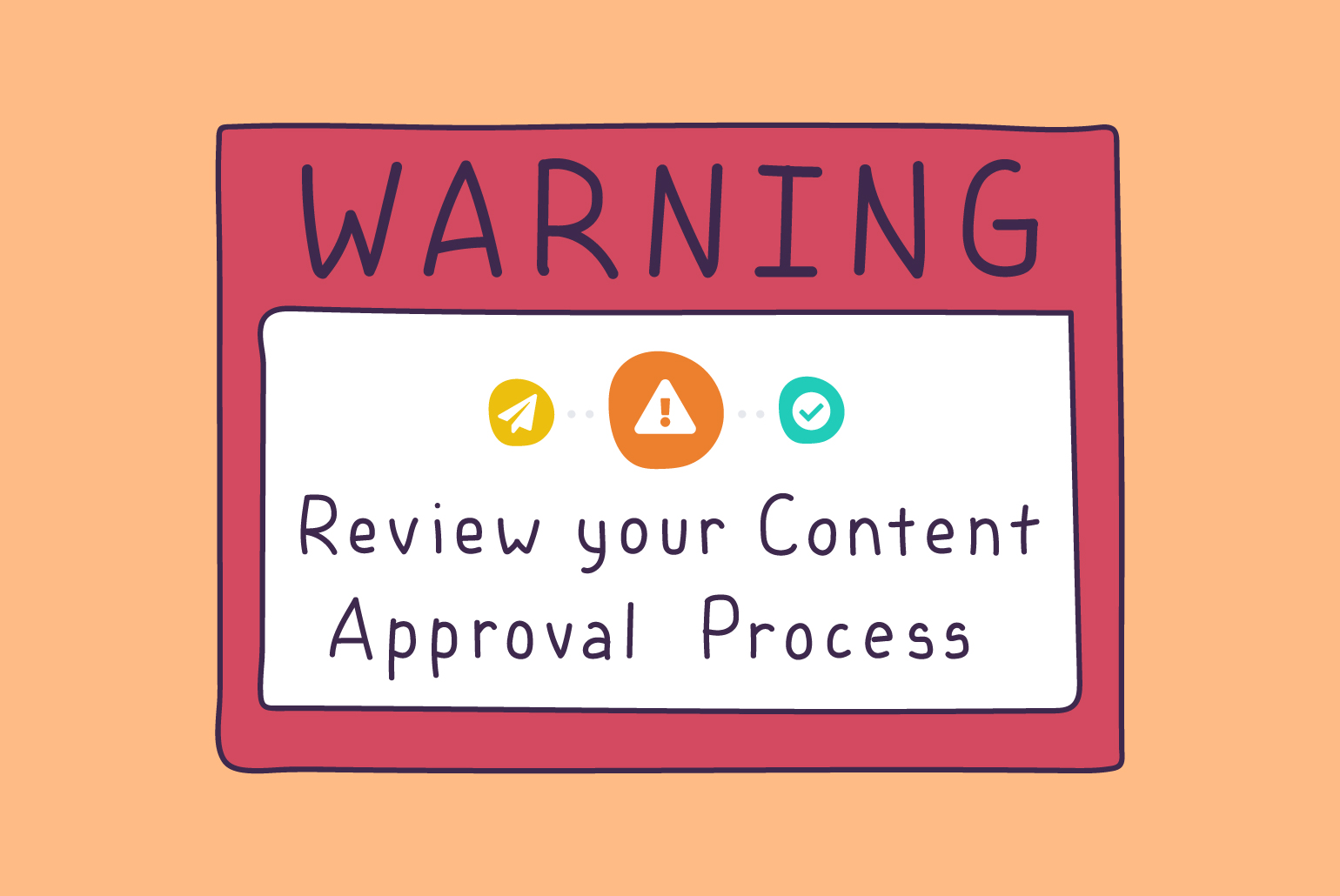Creating content is a process that involves many people: clients, content marketers, copywriters, designers, managers, and more. Throughout the content approval process, there are multiple review points to ensure that the final product is accurate, timely, compelling, and on-brand.
However, for every person you involve, there is an added communication process and set of deadlines that need to be upheld, and more potential holdups to face.
Making changes to workflows and reorganizing your team requires time and thought, so you don’t want to make arbitrary changes without good reason. Still, the right adjustments can drastically improve your team’s productivity.
Here are a few indicators that the content approval process you have in place could use a reboot:
- Regularly missed deadlines 📆
- No clear endpoint to a seemingly endless cycle of reviews ♻️
- Information frequently lost or forgotten 🤷♀️
- Repeated “checking in” messages and requests to reviewers are necessary to keep the process moving 📫
- Disorganized storage system for feedback, and notes in multiple places like email, Slack messages, Excel documents, etc. 📚
- Redundant suggestions made by different people resulting from siloed communication channels 💬
- General frustration amongst the team and clients about disorganization 😩
If any of these sound familiar, then it might be time to examine the content approval process you have in place and make some improvements.
1. Start with a briefing
One of the best steps you can take to get your content approval process organized is to start with a high-level briefing before you start creating content.
By sharing the strategy and goals that should guide the content, you help get everyone on the same page from the start. Then, when each person is reviewing the content during their turn, the vision will be aligned and you will avoid wasting time on off-topic ideas or adjustments.
2. Define responsibilities
Each person should know their role in the content review process and the order in which they will review the content.
Some people will be in charge of providing suggestions to the team, while others, like clients, will give directions that must be implemented. Ensuring that everyone knows their function and the roles of others helps smooth out the process.
An important part of defining responsibilities is limiting editing access to avoid a ‘too-many-cooks-in-the-kitchen’ situation. When anyone can make changes to the content, you run a higher risk of making mistakes.
Gain solves this issue by allowing you to define permissions and allows your clients to preview their content and request changes. Meanwhile, it restricts the actual modifications to the content creators in charge.
3. Map out your workflow
It’s easy to get caught up in a lot of back-and-forth content reviews. For example, a client may request a change, the copy editor could change the wording, the SEO team may change the keywords, and after all of that, it is sent back to the client for approval who requests yet another change.
This cycle can seem endless, frustrating, and impossible to get anything done. However, by mapping out the content approval workflow, you can keep things moving and know at any given point where a holdup has occurred or what needs to happen next.
4. Centralize your communications
Even with a clearly defined workflow, discussions are happening in private emails, Slack messages or conversations, and information can easily get lost. Misplaced information can lead to miscommunications, errors, and missed deadlines.
Even in a best-case scenario, where everyone keeps careful track of information shared among multiple communication channels, it’s not uncommon for the same requests to be repeated. This wastes valuable time as your team may be discussing issues that have already been resolved.
Gain tracks when changes are made to content, and by whom, helping make the content review process more transparent. You can also track conversations in Gain, allowing everyone to see what decisions have been made on a specific piece of content so that they are up to speed when they review or edit that content.
5. Automate reminders
The project or account manager plays a key role in keeping people on track and getting content produced on time. However, many managers spend their time chasing down reviewers when they could be saving their brainpower for thoughtful, strategic work.
By automating the reminder process for reviewers, project and account managers can do more. Gain’s smart automation lets you set up your review process so that once someone has completed their work, they can submit it for review. Gain then sends a reminder to the next person that their input is required, eliminating the need for the manager to mediate that handoff.
A better content approval process
If your team is regularly spending their time on repetitive tasks and tracking down feedback about content, take a step back and review your content review process. A disorganized workflow leads to inefficient work and frustration, and it’s well worth the time to restructure your process.
Gain is an easy-to-use tool that automates the gathering of feedback and approvals from clients or stakeholders, specifically designed for marketing assets. Start a free trial and save precious time with an automated approval workflow for all your marketing content!






